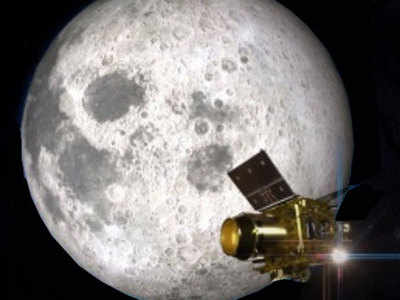- News
- India News
- Nasa praises India’s moon mission, offers joint solar system exploration
Trending
This story is from September 8, 2019
Nasa praises India’s moon mission, offers joint solar system exploration

NEW DELHI: US space agency Nasa on Sunday said it was “inspired” with the Chandrayaan-2 mission and that it was ready to tie up with Isro for a joint exploration of the solar system. Nasa’s reaction came a day after Vikram lander’s “hard-landing” even as an Isro source says that a Nasa payload on board Vikram “could cast light on what happened just before contact with the lander was lost”.
Praising India for its difficult landing mission on Moon’s south pole, Nasa tweeted, “Space is hard.We commend ISRO’s attempt to land their Chandrayaan2 mission on the Moon’s South Pole. You have inspired us with your journey and look forward to future opportunities to explore our solar system together.” The US offer for joint exploration came even as Isro plans to launch its Aditya L-1 solar mission by next year.
A senior Trump administration official, acting assistant secretary for South and Central Asia, Alice G Wells also called India’s mission “incredible”. “The mission is a huge step forward for India and will continue to produce valuable data to fuel scientific advancements,” he tweeted.
An Isro source told TOI that Nasa’s payload laser reflector array on board Vikram was meant to track the lander’s location and calculate the distance between Earth and Moon. “The US payload, attached to Vikram, could provide vital clues about exactly what happened just before the hard-landing. It could have beamed lasers to several US orbiters in Moon’s circular orbit and given data of Vikram’s final descent.” He said, “If Vikram had broken, the Nasa payload would have also shattered as it had a glass component.” However, the Isro source said that “Nasa could have information related to the final descent that it could share with India”.
Praising India for its difficult landing mission on Moon’s south pole, Nasa tweeted, “Space is hard.We commend ISRO’s attempt to land their Chandrayaan2 mission on the Moon’s South Pole. You have inspired us with your journey and look forward to future opportunities to explore our solar system together.” The US offer for joint exploration came even as Isro plans to launch its Aditya L-1 solar mission by next year.
A senior Trump administration official, acting assistant secretary for South and Central Asia, Alice G Wells also called India’s mission “incredible”. “The mission is a huge step forward for India and will continue to produce valuable data to fuel scientific advancements,” he tweeted.
An Isro source told TOI that Nasa’s payload laser reflector array on board Vikram was meant to track the lander’s location and calculate the distance between Earth and Moon. “The US payload, attached to Vikram, could provide vital clues about exactly what happened just before the hard-landing. It could have beamed lasers to several US orbiters in Moon’s circular orbit and given data of Vikram’s final descent.” He said, “If Vikram had broken, the Nasa payload would have also shattered as it had a glass component.” However, the Isro source said that “Nasa could have information related to the final descent that it could share with India”.
Just before the lander's hard-landing, former Nasa astronaut Jerry Linenger had explained to TOI about the role of the US payload, saying “laser reflector on board the lander would beam a laser to orbiters around Moon (orbit), which would be reflected and the return signal would be assessed to find the exact altitude. By doing so, it would help make Moon mapping much more accurate.”
End of Article
FOLLOW US ON SOCIAL MEDIA










